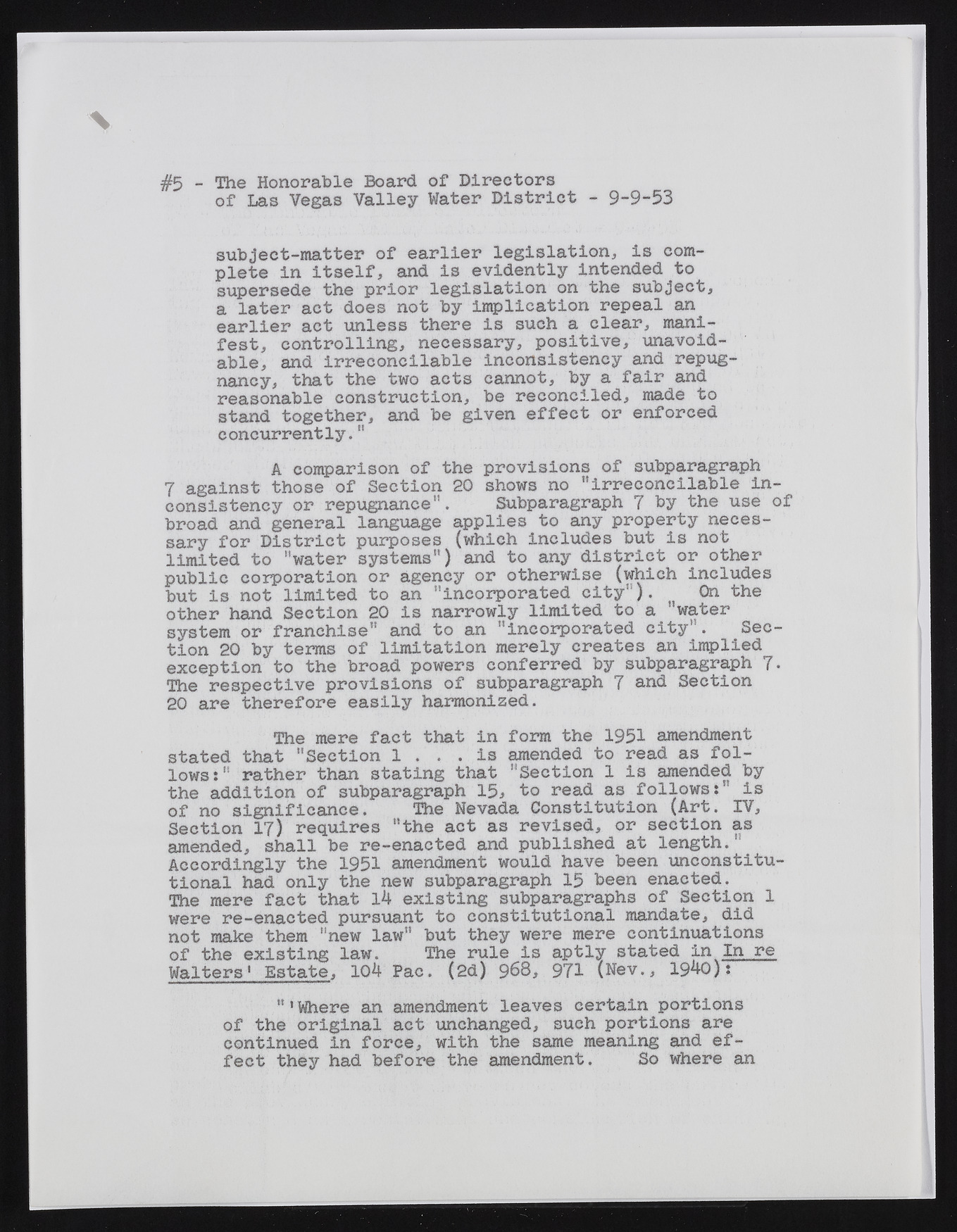Copyright & Fair-use Agreement
UNLV Special Collections provides copies of materials to facilitate private study, scholarship, or research. Material not in the public domain may be used according to fair use of copyrighted materials as defined by copyright law. Please cite us.
Please note that UNLV may not own the copyright to these materials and cannot provide permission to publish or distribute materials when UNLV is not the copyright holder. The user is solely responsible for determining the copyright status of materials and obtaining permission to use material from the copyright holder and for determining whether any permissions relating to any other rights are necessary for the intended use, and for obtaining all required permissions beyond that allowed by fair use.
Read more about our reproduction and use policy.
I agree.Information
Digital ID
Permalink
Details
More Info
Rights
Digital Provenance
Publisher
Transcription
#5 - T h e H o n o r a b le B o a r d of D i r e c t o r s o f L a s V e g a s V a l l e y W a t e r D i s t r i c t - 9-9-53 subject-matter of earlier legislation, is complete in itself, and is evidently Intended to supersede the prior legislation on the subject, a later act does not by implication repeal an earlier act unless there is such a clear, manifest, controlling, necessary, positive, unavoidable, and irreconcilable inconsistency and repugnancy, that the two acts cannot, by a fair and reasonable construction, be reconciled, made to stand together, and be given effect or enforced concurrently." A comparison of the provisions of subparagraph 7 against those of Section 20 shows no “irreconcilable inconsistency or repugnance". Subparagraph 7 by the use of broad and general language applies to any property necessary for District purposes (which includes but is not limited to "water systems") and to any district or other public corporation or agency or otherwise (which includes but is not limited to an "incorporated city"). On the other hand Section 20 is narrowly limited to a water system or franchise" and to an "incorporated city". Section 20 by terms of limitation merely creates an implied exception to the broad powers conferred by subparagraph 7. The respective provisions of subparagraph 7 and Section 20 are therefore easily harmonized. The mere fact that in form the 1951 amendment stated that "Section 1 ... is amended to read as follows:" rather than stating that "Section 1 is amended by the addition of subparagraph 15, to read as follows:” is of no significance. The Nevada Constitution (Art. IV, Section 17) requires "the act as revised, or section as amended, shall be re-enacted and published at length." Accordingly the 1951 amendment would have been ?unconstitutional had only the new subparagraph 15 been enacted. The mere fact that 14 existing subparagraphs of Section 1 were re-enacted pursuant to constitutional mandate, did not make them "new law" but they were mere continuations of the existing law. The rule is aptly stated in In re Walters1 Estate, 104 Pac. (2d) 968, 971 (Nev., 19^0): "'Where an amendment leaves certain portions of the original act unchanged, sueh portions are continued in force, with the same meaning and effect they had before the amendment. So where an

